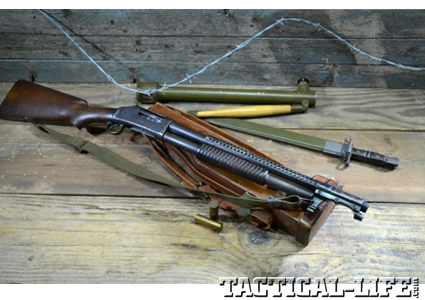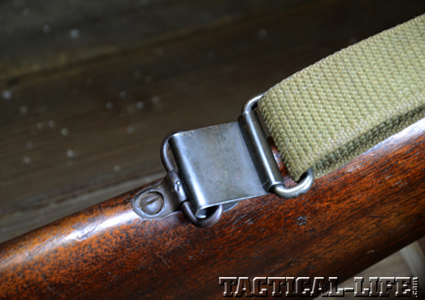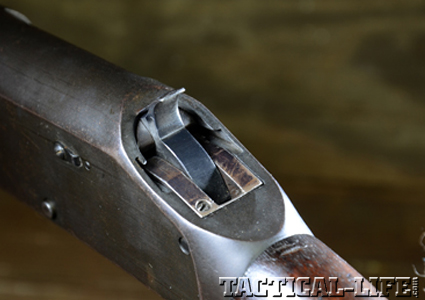I still remember when I bought my first Model 97 Trench Gun. I had wanted one since I first saw photos of U.S. Doughboys and Marines with the Trench Gun and read about it. The day I went to buy a much-used sample, I didn’t think of it as a collectible; I wanted to handle and shoot the weapon. Since then I’ve owned three other Trench Guns, and my current one, the World War I example, is featured in this article. For most shooters and those with an interest in WWI, the Model 97 Trench Gun is the iconic U.S. military fighting shotgun. However, it was the Model 97 Riot Gun that first proved its effectiveness in close-quarters combat during the Philippine Insurrection. The anemic Army Colt .38 didn’t stop fanatic Moro Juramentados, and even the Krag rifle didn’t always stop them. But the Riot Gun loaded with buckshot generally did.
While serving in the Philippines, Captain John Pershing had a chance to see the effectiveness of the Model 97 firsthand. And later, as a brigadier general, he would serve as the governor of Moro Province. When Pershing led the U.S. Punitive Expedition into Mexico, he had some of his troops equipped with Model 97 Riot Guns—that included some cavalrymen who found the firearm very effective. This operation against Mexico later influenced the films The Wild Bunch and The Professionals, which portrayed these Riot Guns.
World Wars
In France as commander of the American Expeditionary Force in WWI, Pershing quickly realized the value of a shotgun for use in the trenches. Already combat proven, the Model 97 was a logical choice, but the Ordnance Department had some requirements prior to military adoption. Sling swivels and a bayonet mount would have to be added. A ventilated handguard that incorporated the front sling swivel and bayonet mount also was added. The ventilated handguard was necessary to dissipate heat so that, after rapid fire, the barrel could be grasped to deliver bayonet thrusts. A bayonet mount designed to take the U.S. Enfield rifle’s Model 1917 bayonet was chosen, as this bayonet was at the time in wide production…
Advertisement — Continue Reading Below
GET THIS ISSUE NOW! at www.tactical-life.com/subscribe/military-surplus/.














































